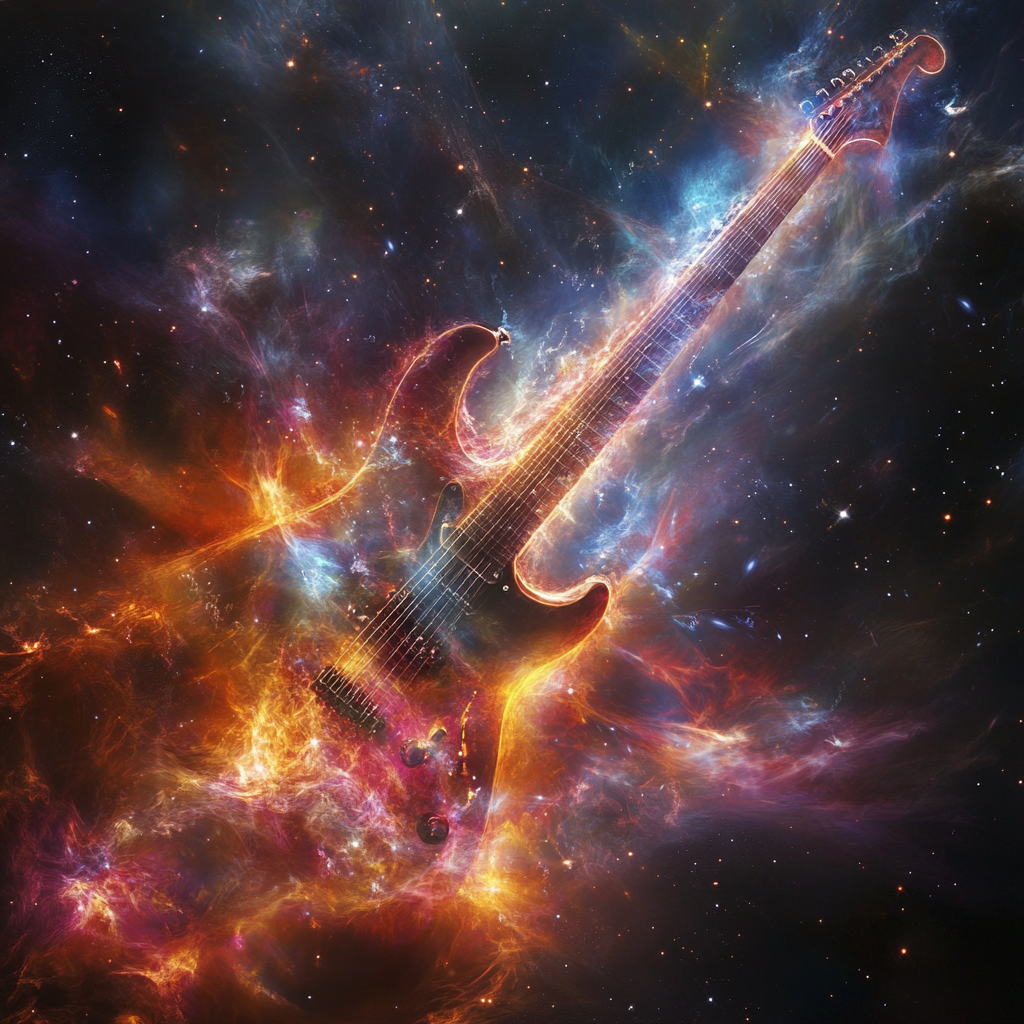
Celestial Symphony Captured: Hubble and Chandra Showcase “Flame-Throwing” Guitar Nebula
The 'Flame-Throwing' Guitar Nebula: A Cosmic Concert Captured by Hubble and Chandra
In the infinite expanse of space, where stars are born and galaxies collide, something downright striking and audacious is unfolding—a spectacular cosmic show so electrifying you'd expect it to open for a heavy metal band. Enter the "Flame-Throwing Guitar Nebula," an astounding marvel recently caught by NASA's legendary Chandra X-ray Observatory and the Hubble Space Telescope. This isn't just a nebula; it's space at its most artistic, a whirlpool of colors and energies that could only be rivaled by a lit-up concert stage.
Let’s dig into this galactic guitar jam session, shall we?
The Guitar Nebula: A Celestial Instrument
Let's get straight to the point: the Guitar Nebula—officially dubbed PSR B2224+65—is no ordinary formation of gas and dust. Nestled approximately 2,700 light-years from our blue little planet, this neon-hued cloud, overflowing with hydrogen gas, is a product of cosmic chaos. Yeah, it was born out of the violent aftermath of a massive star's collapse, and what’s left behind is not just any leftover—it's a pulsar, a neutron star that spins rapidly and sends waves of energy through the universe. This isn't your grandma's astronomy; that pulsar is the rock star at the tip of this celestial guitar, wailing away while creating an awe-inspiring cosmic instrument.
The Pulsar: The Heart of the Guitar
Let’s talk about the pulsar PSR B2224+65, because frankly, it's the superstar here. This neutron star spins at a mind-boggling pace of 3.6 million miles per hour (yes, you read that right!) and generates magnetic fields stronger than anything found on Earth—like thousands of Earth's magnetic fields rolled into a cosmic burrito. These potent fields create an electrifying spectacle, propelling high-energy particles that yield mesmerizing X-ray radiation. One can't help but think of it as the guitar pick that strums the strings of space-time itself.
The Flame-Like Filament
Now, let's not forget the pièce de résistance: the "flame-like filament" that dances and trails from the pulsar. This eye-catching feature extends a whopping two light-years, stretching roughly 12 trillion miles! That’s like saying it's far enough to tickle the toes of the cosmos! This energetic filament is composed of matter and antimatter particles, creating an ethereal glow. The X-rays emitted here are the universe’s way of saying, “Look at me! I’m glowing!”—a beautiful case of particles spiraling along the pulsar’s magnetic field lines. Just like fireworks lighting up the night, this filament shapes the Guitar Nebula into a jaw-dropping canvas of cosmic artistry.
Observations and Videos
Because the universe is a drama queen, the Hubble and Chandra telescopes have been hard at work capturing this spectacle over years. The data from Chandra span from 2000 to 2021, showcasing how this brilliant filament has evolved. Imagine watching a time-lapse video of a city that never sleeps; you won’t blink, and you’ll be in awe of the change. Hubble pitched in with stunning views from 1994 to 2021, revealing the intricate dance of the pulsar and its neighbors—the supporting cast of this galactic tale—adding depth to the performance.
Couple these observations with some visual flair, and you have yourself a celestial masterpiece. It's almost like watching a live performance by the universe with a full light and sound show.
Cosmic Interactions
Now, as our pulsar and nebula strut their stuff through cosmic space, they show-off by interacting with denser regions of cosmic gas. It's like they’re performing a heavy metal anthem, colliding with a crowd of gas particles, sending shockwaves of high-energy particles out into the universe. These energetic particles escape the nebula, creating that captivating filament we see in X-ray light. It’s as though cosmic gravity is the bouncer, allowing only the most energetic cuts from the concert to escape into the night. The dance continues as particles spiral and flow along the magnetic field lines in the interstellar medium, captivating all who dare to look.
Scientific Significance
Beyond the stunning visuals, the Guitar Nebula serves an important purpose in understanding the universe. It’s a cosmic laboratory on a grand scale. The shape and output of the filament help scientists grasp how pulsars affect their surroundings and how energy morphs into matter. You see, when high-energy jets burst forth from the pulsar, they perform a spectacular conversion act—using Einstein's famous equation, E=mc², they create pairs of electrons and positrons. Of course, these particles play a game of tag, annihilating each other and converting back into bursts of energy. It’s a cosmic cycle of creation and destruction, and yeah, it's pretty mind-blowing.
Conclusion
The "Flame-Throwing Guitar Nebula" is an awe-inspiring testament to the chaotic and beautiful processes happening in our universe. Through the mind-bending work of NASA’s Chandra and Hubble telescopes, we catch a glimpse of something far more astonishing than the best fireworks display on Earth. This celestial wonder is not just a feast for the eyes; it’s a symphony of physical principles at play, providing insights into the grand ballet of cosmic evolution.
So, if you’re eager to stay in the loop with these celestial marvels and the latest in cosmic occurrences, don’t just sit back. Make sure to subscribe to our Telegram channel: @channel_neirotoken. There’s a whole universe of awe waiting for you!

